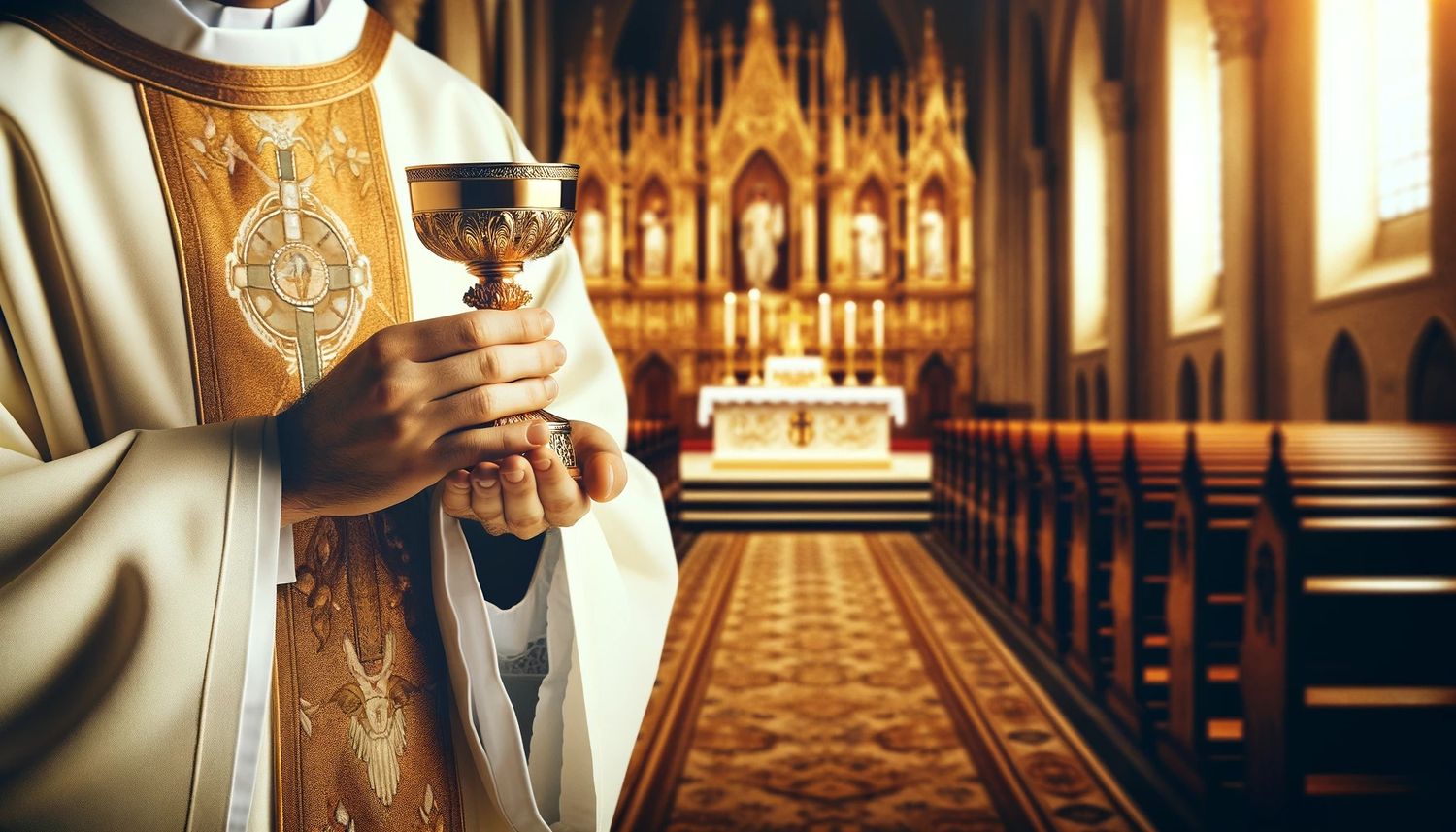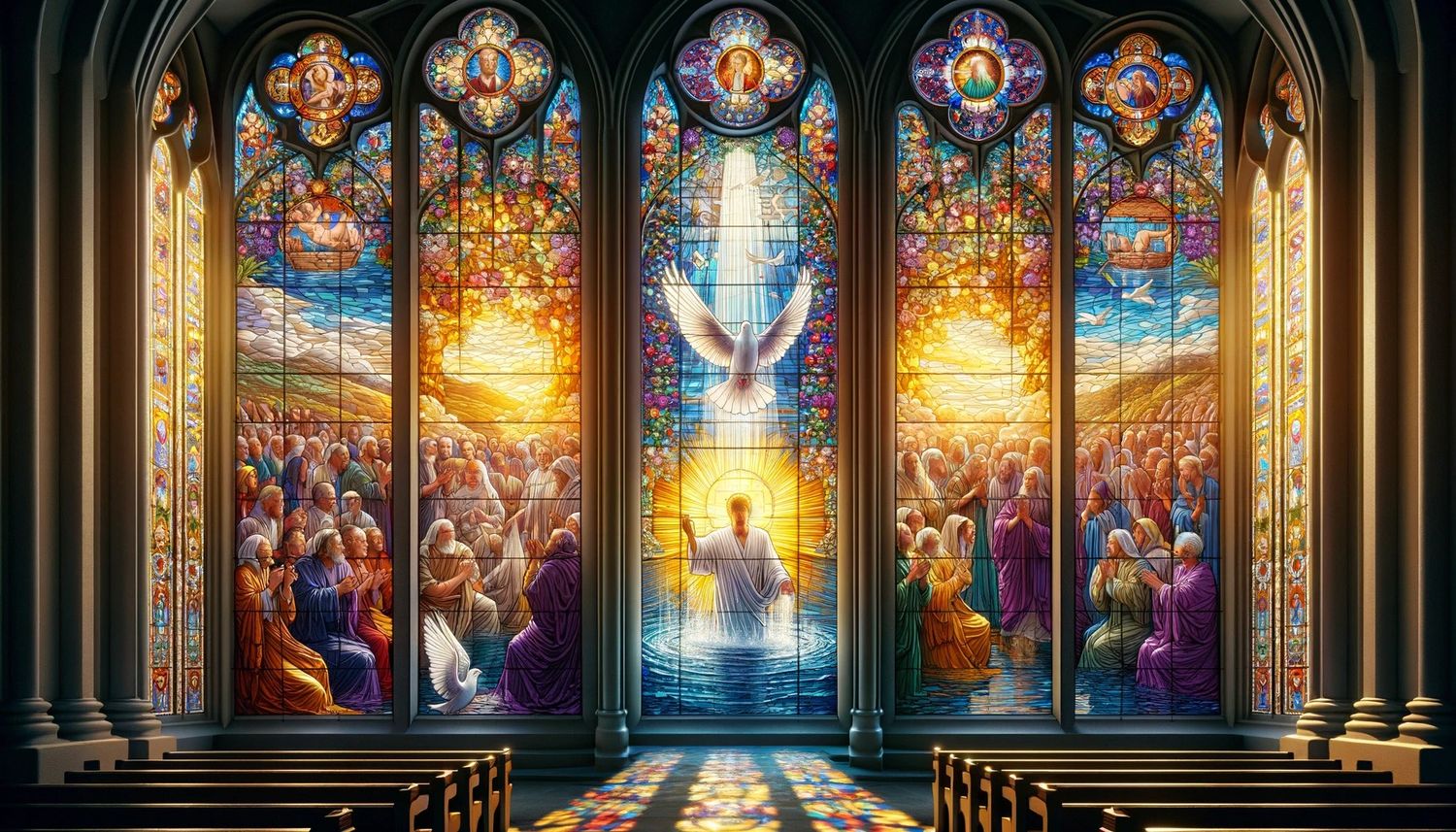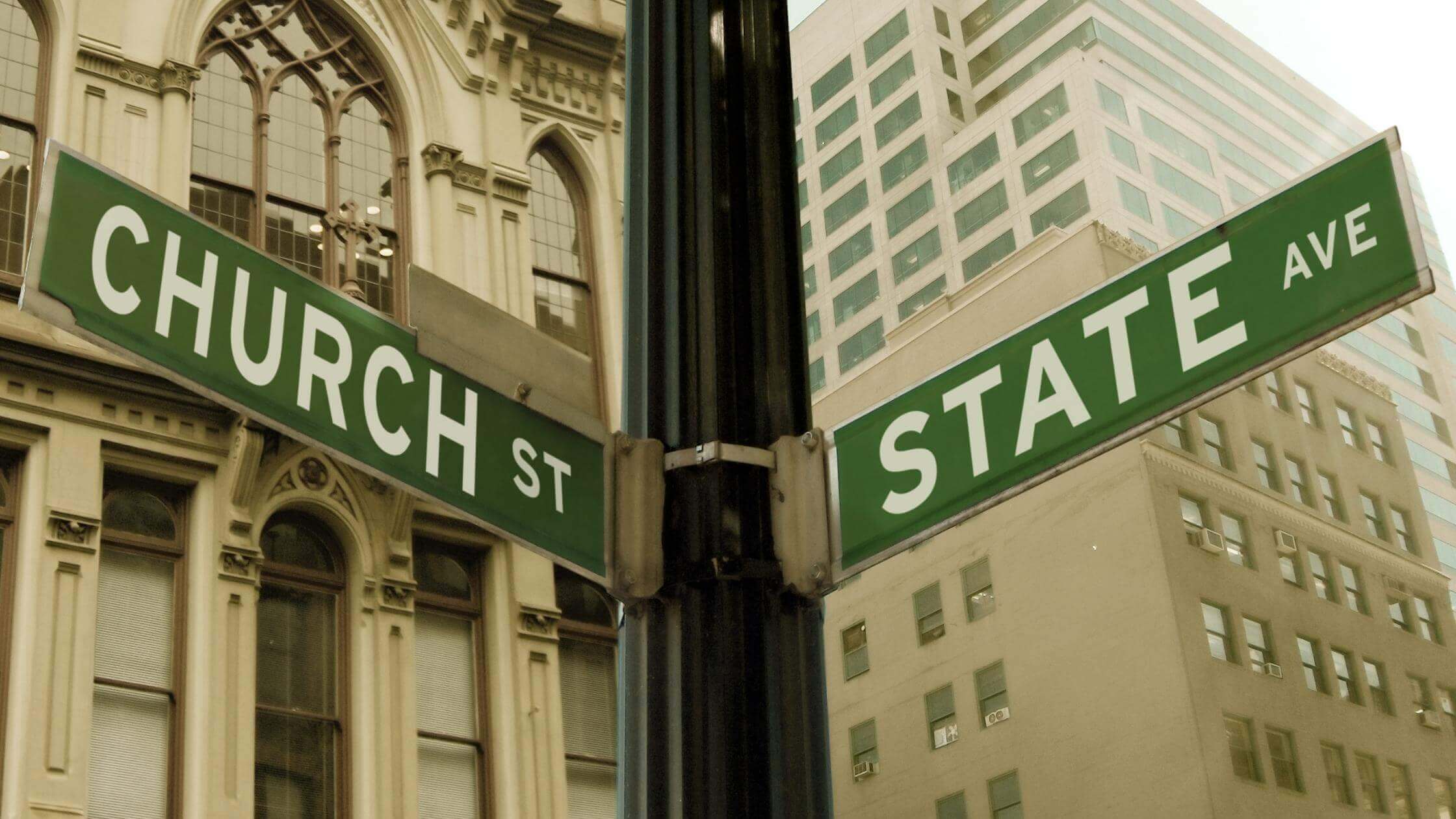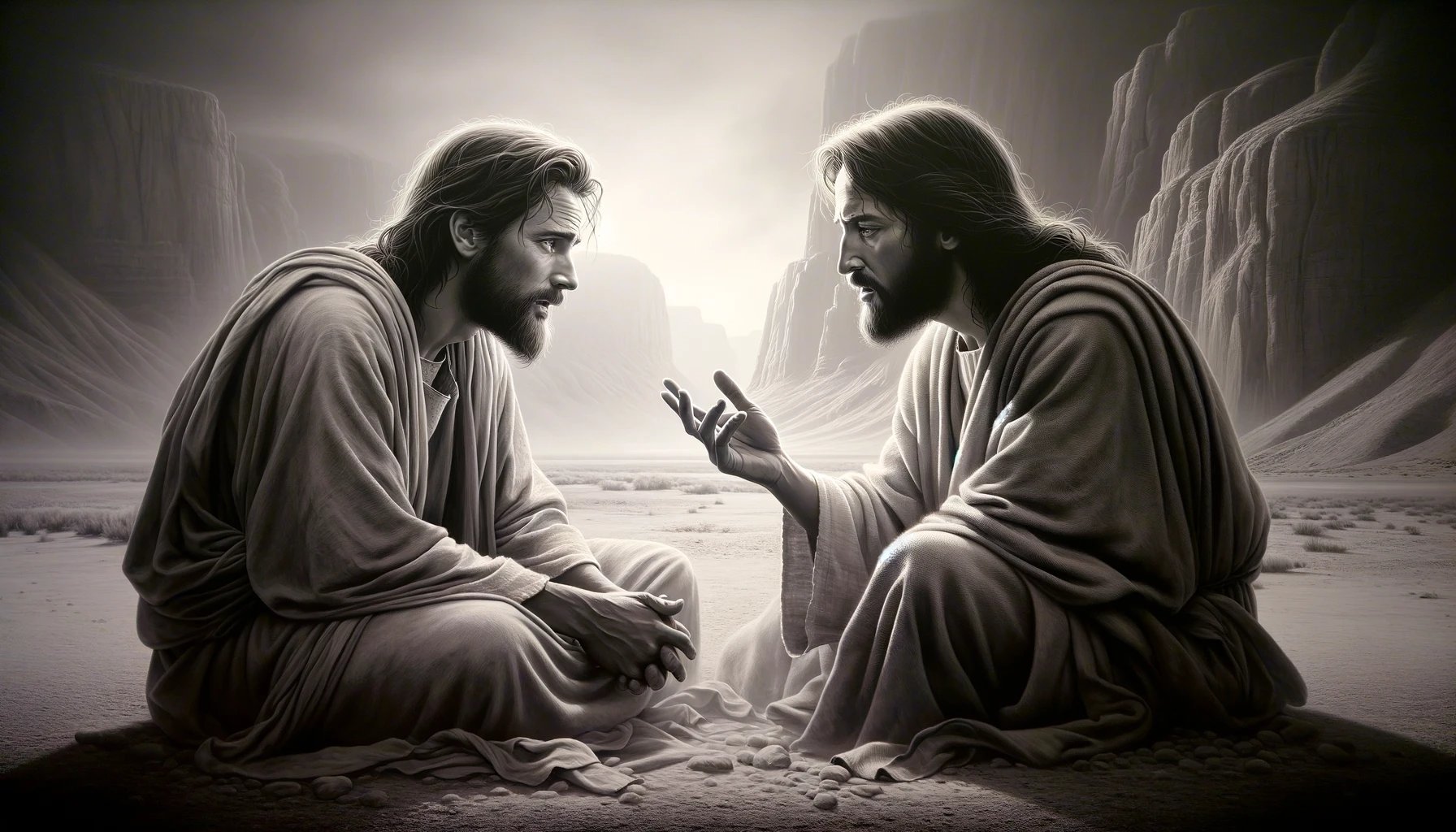Home>Theology and Spirituality>What Does The Constitution Say About Church And State
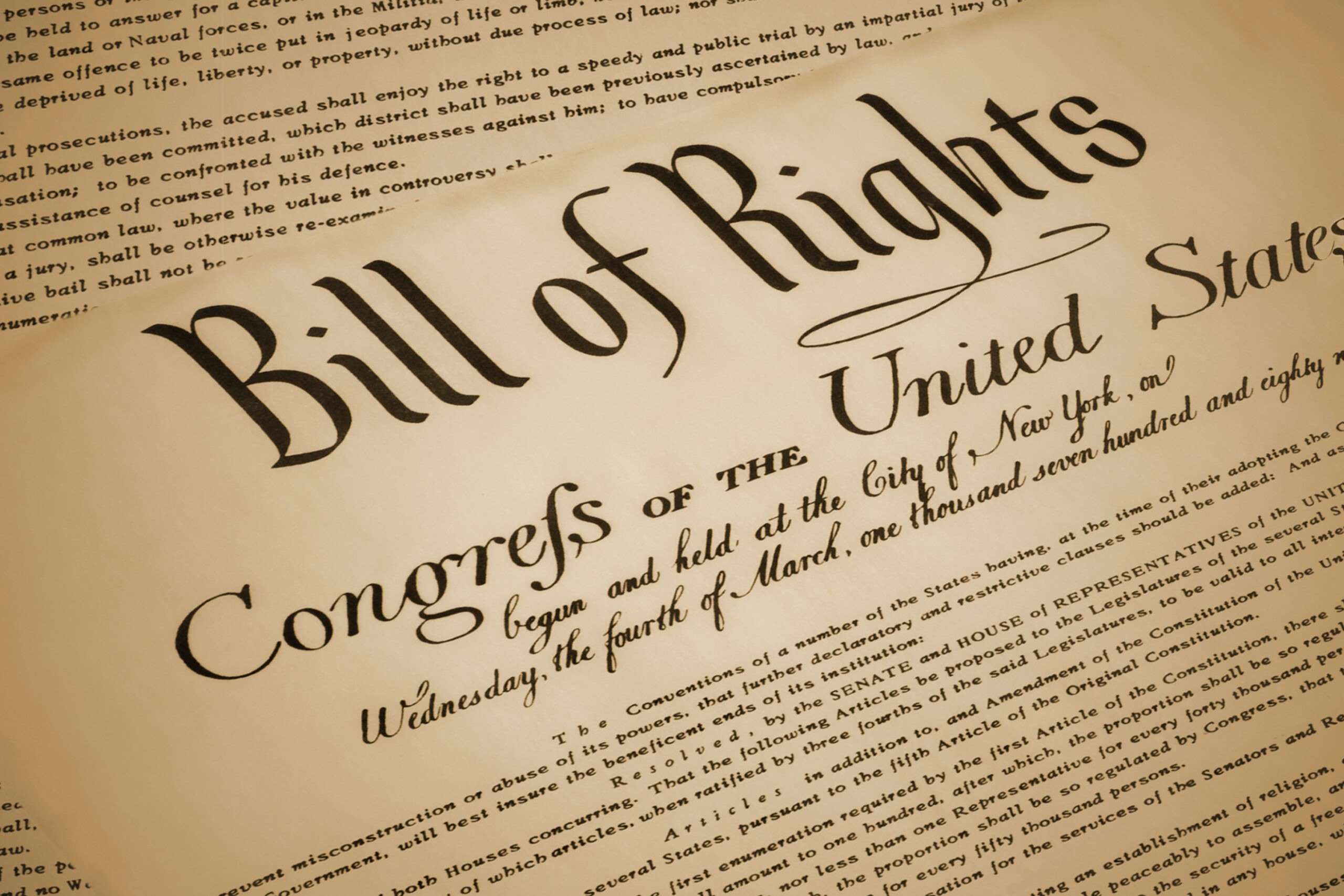

Theology and Spirituality
What Does The Constitution Say About Church And State
Published: February 11, 2024
Peter Smith, Editorial Director at Christian.net, combines deep insights into faith, politics, and culture to lead content creation that resonates widely. Awarded for his contributions to religious discourse, he previously headed a major organization for religious communicators, enhancing dialogue on faith's societal impacts.
Discover what the Constitution says about the separation of church and state. Explore the intersection of theology and spirituality in the context of constitutional law.
(Many of the links in this article redirect to a specific reviewed product. Your purchase of these products through affiliate links helps to generate commission for Christian.net, at no extra cost. Learn more)
Table of Contents
Introduction
The relationship between church and state has been a topic of significant debate and contention throughout history. In the United States, this issue is addressed in the First Amendment of the Constitution, which states, "Congress shall make no law respecting an establishment of religion, or prohibiting the free exercise thereof." This single sentence has sparked countless discussions, legal battles, and philosophical inquiries into the nature of religious freedom and the role of government in matters of faith.
The framers of the Constitution sought to create a society where individuals could practice their faith freely without fear of government interference or establishment of a state religion. This fundamental principle has shaped the legal and cultural landscape of the United States, influencing everything from public education to the display of religious symbols in government spaces.
Understanding the nuances of the Establishment Clause and the Free Exercise Clause is crucial in comprehending the complexities of church-state relations in the United States. These clauses serve as the cornerstone of religious freedom and have been the subject of numerous Supreme Court cases that have shaped the interpretation and application of these constitutional principles.
As we delve into the intricacies of the Constitution's stance on church and state, it becomes evident that this topic is not merely a matter of legal jargon, but a reflection of the values and beliefs that underpin the American society. By examining the historical context, legal precedents, and contemporary debates surrounding this issue, we can gain a deeper appreciation for the delicate balance between religious liberty and governmental authority in the United States.
The Establishment Clause
The Establishment Clause, a pivotal component of the First Amendment, serves as a cornerstone of religious freedom in the United States. It states, "Congress shall make no law respecting an establishment of religion." This succinct yet profound statement embodies the framers' commitment to preventing the government from favoring or endorsing any particular religion. The clause was crafted to safeguard against the establishment of a state religion and to ensure that individuals are free to practice their faith without coercion or influence from the government.
At its core, the Establishment Clause embodies the principle of separation of church and state, a concept deeply rooted in American history. This principle aims to maintain a neutral stance by the government concerning religious matters, thereby preventing the imposition of religious beliefs on citizens through legislative action. The framers' intent was to create a society where individuals could worship according to their conscience, free from government interference or preference for any specific religious denomination.
The interpretation and application of the Establishment Clause have been the subject of extensive legal and scholarly analysis. Over the years, the Supreme Court has grappled with cases that have tested the boundaries of this constitutional provision. Landmark decisions, such as Everson v. Board of Education and Lemon v. Kurtzman, have contributed to shaping the understanding of the Establishment Clause and its implications for public institutions and government actions.
One of the key considerations in interpreting the Establishment Clause is the concept of government neutrality toward religion. This neutrality requires that the government neither promote nor inhibit religion, thereby respecting the diverse beliefs held by its citizens. Consequently, public institutions are prohibited from engaging in activities that endorse or advance a particular religious viewpoint, ensuring that individuals of all faiths, as well as those who adhere to no religion, are equally valued and respected by the government.
The Establishment Clause has also been invoked in debates surrounding the display of religious symbols on public property, prayer in public schools, and government funding for religious organizations. These contentious issues have prompted rigorous legal scrutiny and have underscored the delicate balance between religious expression and the government's obligation to remain neutral in matters of faith.
In essence, the Establishment Clause stands as a bulwark against the entanglement of religion and government, upholding the principle of religious pluralism and individual autonomy in matters of faith. Its enduring significance lies in its role as a safeguard for religious liberty, ensuring that the United States remains a land where diverse beliefs are respected and where the government refrains from entangling itself in the realm of religious conviction.
The Free Exercise Clause
The Free Exercise Clause, a fundamental component of the First Amendment, is a cornerstone of religious freedom in the United States. It states, "Congress shall make no law…prohibiting the free exercise [of religion]." This provision underscores the framers' commitment to ensuring that individuals have the liberty to practice their faith without governmental interference or restriction. The Free Exercise Clause embodies the principle that individuals have the right to live according to their religious beliefs, free from undue burdens imposed by the government.
At its essence, the Free Exercise Clause reflects the framers' recognition of the intrinsic value of religious conviction and the need to protect individuals from governmental infringement on matters of faith. This constitutional safeguard is rooted in the belief that religious freedom is a fundamental human right that should be upheld and respected by the government. The clause serves as a shield against laws or policies that unduly burden individuals' ability to live out their religious beliefs in their daily lives.
The interpretation and application of the Free Exercise Clause have been the subject of significant legal scrutiny and have played a pivotal role in shaping the landscape of religious liberty in the United States. Supreme Court decisions, such as Sherbert v. Verner and Employment Division v. Smith, have contributed to delineating the boundaries of the Free Exercise Clause and its implications for individuals and religious organizations.
One of the key considerations in interpreting the Free Exercise Clause is the concept of religious accommodation. This principle acknowledges that individuals should not be unduly burdened in the practice of their faith and that the government should strive to accommodate religious beliefs and practices where feasible. This has manifested in cases involving religious exemptions from certain laws or regulations that may conflict with sincerely held religious beliefs.
The Free Exercise Clause has also been invoked in debates surrounding religious practices in institutional settings, such as prisons and the military, as well as in cases involving the rights of religious organizations to operate in accordance with their beliefs. These contentious issues have underscored the delicate balance between upholding religious freedom and ensuring that laws and regulations are applied uniformly while respecting individuals' deeply held religious convictions.
In essence, the Free Exercise Clause stands as a bulwark against governmental infringement on religious practices, affirming the principle that individuals have the right to live out their faith without undue interference. Its enduring significance lies in its role as a protector of religious liberty, ensuring that individuals can freely exercise their beliefs without fear of governmental encroachment.
Supreme Court Interpretations
The Supreme Court of the United States has played a pivotal role in interpreting and elucidating the nuances of the Establishment Clause and the Free Exercise Clause. Through landmark decisions and legal precedents, the Court has shaped the understanding of these constitutional provisions and their implications for religious freedom and the relationship between church and state.
One of the seminal cases that significantly influenced the interpretation of the Establishment Clause is Everson v. Board of Education (1947). In this landmark decision, the Court articulated the concept of "separation of church and state," affirming that the Establishment Clause erects a "wall of separation" between the government and religious institutions. This metaphor has since become emblematic of the Court's stance on maintaining a strict division between the realms of religion and government, thereby safeguarding against state-sponsored religion and religious favoritism.
Another pivotal case that has shaped the understanding of the Establishment Clause is Lemon v. Kurtzman (1971). In this case, the Court established the "Lemon test," a three-pronged assessment to determine the constitutionality of government actions concerning religion. The test mandates that a statute must have a secular legislative purpose, its principal or primary effect must neither advance nor inhibit religion, and it must not result in an excessive entanglement between government and religion. The Lemon test has served as a guiding framework for evaluating the constitutionality of various government actions in relation to religion, providing a structured approach to discerning compliance with the Establishment Clause.
In the realm of the Free Exercise Clause, the Supreme Court has grappled with cases that have tested the boundaries of religious liberty and governmental interests. Sherbert v. Verner (1963) marked a significant turning point in the Court's approach to accommodating religious practices. In this case, the Court established a standard requiring the government to demonstrate a compelling interest in order to justify laws that substantially burden the exercise of religion. This heightened scrutiny underscored the Court's commitment to protecting individuals' religious practices from undue governmental interference, setting a precedent for future cases involving religious accommodations.
Moreover, Employment Division v. Smith (1990) presented a notable shift in the Court's approach to religious exemptions from generally applicable laws. In this decision, the Court held that neutral and generally applicable laws do not violate the Free Exercise Clause, even if they incidentally burden religious practices. This ruling marked a departure from the previous standard set in Sherbert, signaling a more deferential approach to legislative enactments that may intersect with religious beliefs.
The Supreme Court's interpretations of the Establishment Clause and the Free Exercise Clause have not only delineated the boundaries of religious freedom but have also underscored the delicate balance between upholding individual liberties and preserving the secular nature of government institutions. These decisions have contributed to the rich tapestry of constitutional jurisprudence, shaping the legal landscape and influencing the interplay between religion and governance in the United States.
Current Debates and Controversies
In contemporary society, the intersection of religion and government continues to be a source of heated debates and contentious controversies. One prominent area of contention revolves around the display of religious symbols on public property. The question of whether religious displays, such as crosses or nativity scenes, in government spaces violate the Establishment Clause has sparked legal battles and public discourse. Advocates argue that such displays are reflective of the nation's heritage and do not necessarily constitute government endorsement of a particular religion. Conversely, opponents contend that these displays convey a message of religious favoritism, thus contravening the principle of government neutrality enshrined in the Establishment Clause.
Another pressing issue pertains to the accommodation of religious beliefs in the context of anti-discrimination laws and public accommodations. Debates have arisen regarding the extent to which businesses and individuals should be compelled to provide services that may conflict with their religious convictions. Cases involving wedding vendors, healthcare providers, and adoption agencies have brought to the forefront the tension between upholding anti-discrimination principles and respecting individuals' religious freedom. These debates underscore the complexities of balancing competing rights and values within a pluralistic society.
Furthermore, the role of religion in public education continues to be a subject of contention. Discussions surrounding prayer in schools, the teaching of evolution, and the inclusion of religious perspectives in curricula have raised questions about the boundaries of religious expression in educational settings. The tension between fostering religious tolerance and avoiding government entanglement with religion has fueled ongoing debates about the appropriate role of faith in public schools.
Additionally, issues related to government funding for religious organizations and the provision of social services have generated significant controversy. Questions about the permissibility of allocating public funds to religiously affiliated institutions for purposes such as education, healthcare, and social welfare have prompted vigorous debates about the boundaries of government support for religious endeavors. These discussions intersect with concerns about ensuring equitable treatment for religious and non-religious organizations while respecting the constitutional principles of religious freedom and governmental neutrality.
The evolving landscape of technology and social media has introduced new dimensions to the debates and controversies surrounding church-state relations. Questions about the use of religious expression in digital public forums, the accommodation of diverse religious beliefs in online spaces, and the regulation of religious content on social media platforms have emerged as pressing issues in the modern era.
As these debates and controversies continue to unfold, they underscore the dynamic and multifaceted nature of the relationship between church and state in contemporary society. The ongoing discourse reflects the enduring relevance of constitutional principles and the need to navigate the complexities of religious freedom, governmental neutrality, and societal pluralism in a rapidly changing world.
Conclusion
The intricate tapestry of church-state relations in the United States is woven with the threads of constitutional principles, legal precedents, and societal dynamics. The foundational pillars of the Establishment Clause and the Free Exercise Clause stand as guardians of religious freedom, embodying the framers' vision of a society where individuals can worship according to their conscience, free from government interference or establishment of a state religion.
The enduring significance of these constitutional provisions lies in their role as safeguards for religious pluralism and individual autonomy in matters of faith. The Establishment Clause, with its mandate for government neutrality toward religion, serves as a bulwark against the entanglement of religion and government, ensuring that diverse beliefs are respected and that the government refrains from advancing any particular religious viewpoint. Similarly, the Free Exercise Clause stands as a protector of religious liberty, affirming the principle that individuals have the right to live out their faith without undue interference.
The Supreme Court's interpretations of these clauses have shaped the legal landscape, delineating the boundaries of religious freedom and underscoring the delicate balance between upholding individual liberties and preserving the secular nature of government institutions. Landmark decisions and legal precedents have provided a framework for evaluating the constitutionality of government actions concerning religion, guiding the interplay between religious expression and governmental authority.
In contemporary society, debates and controversies surrounding church-state relations continue to unfold, reflecting the dynamic and multifaceted nature of this relationship. From the display of religious symbols in public spaces to the accommodation of religious beliefs in the context of anti-discrimination laws, these issues underscore the complexities of balancing competing rights and values within a pluralistic society.
As the United States navigates the evolving landscape of technology, social dynamics, and cultural diversity, the principles enshrined in the Constitution serve as guiding beacons, illuminating the path toward a society where religious freedom flourishes, and the government remains steadfast in its commitment to neutrality in matters of faith.
In essence, the constitutional provisions addressing church-state relations embody the enduring values of liberty, pluralism, and equality, serving as a testament to the nation's commitment to fostering a society where individuals of all faiths, as well as those who adhere to no religion, are equally valued and respected. The ongoing discourse and legal developments in this realm underscore the nation's dedication to upholding the principles of religious freedom and governmental neutrality, ensuring that the delicate balance between church and state remains a cornerstone of American society.




